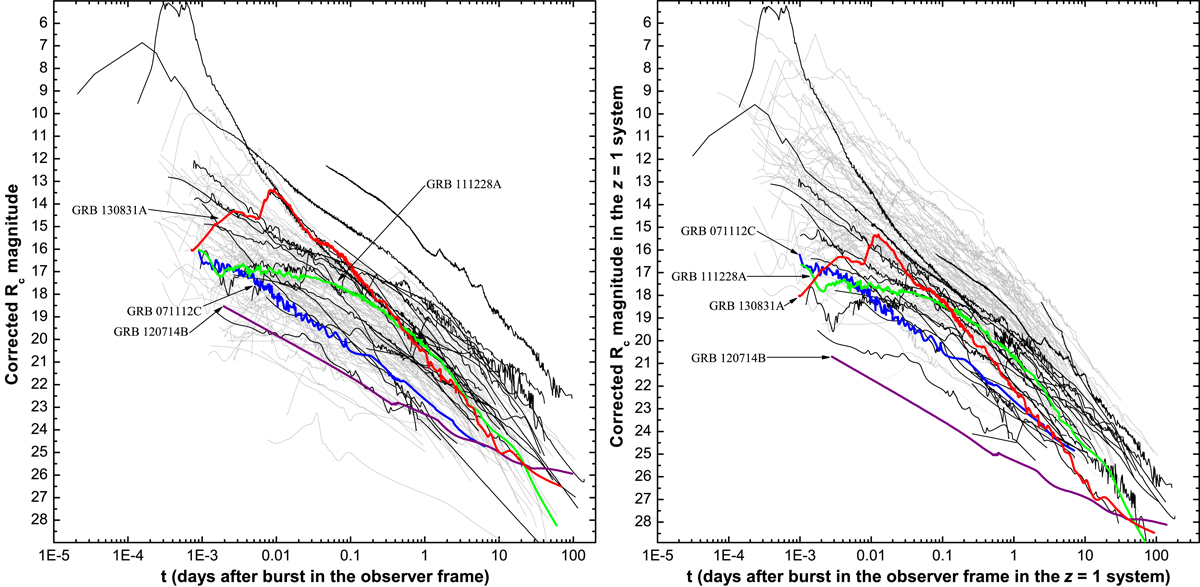Fig. 13.

Left panel: observed afterglows of (long) GRBs. These light curves are corrected for Galactic extinction and, where appropriate, for the contribution of the host galaxy and the late-time supernova signature. Light-gray light curves are afterglows with no known SN contribution. Black lines are afterglows with detected SN signatures. Finally, the afterglows of the four GRBs discussed in this paper are color-coded and labeled. It can be seen that GRBs associated with SNe span a large observed magnitude range, from the brightest afterglows to among the faintest. Right panel: afterglows, corrected for all line-of-sight extinction, and shifted to a common redshift z = 1 (i.e., the afterglows are as they would be observed if they all lay at that redshift and were not affected by dust extinction). The SN-associated GRB afterglows are now seen to cluster in the lower part of the distribution; indeed, GRB 120714B has the least luminous afterglow within the entire sample except at very late times. For more details, see Appendix B.
Current usage metrics show cumulative count of Article Views (full-text article views including HTML views, PDF and ePub downloads, according to the available data) and Abstracts Views on Vision4Press platform.
Data correspond to usage on the plateform after 2015. The current usage metrics is available 48-96 hours after online publication and is updated daily on week days.
Initial download of the metrics may take a while.


